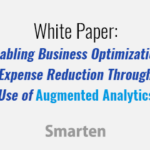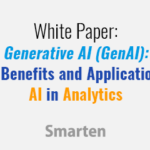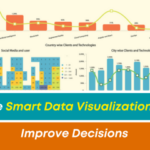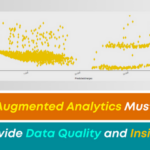Incorporate PMML Integration Within Augmented Analytics to Easily Manage Predictive Models!
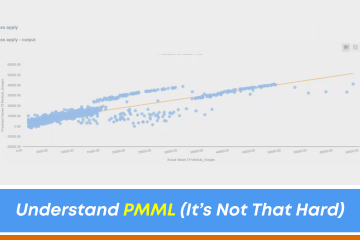
You may not be an analytics expert and you may find terms like PMML Integration somewhat daunting. But in reality, the concept is not complex, and the value is outstanding!
So, what is PMML Integration? PMML is Predictive Model Markup Language. It is an interchange format that provides a method by which analytical applications and software can describe and exchange predictive models. To accomplish this interchange, the method uses data mining and machine learning and it contains components like a data dictionary to define the fields used by the model, and data transformation to map user data and make it easier for the system to mine that data. The data mining models are defined and the mining schema creates a list of data dictionary fields and methods that dictate how data will be treated, what the data types are, etc. In other words, the system is meant to break down the process and define it in detail so that, no matter what type or size your data model is, you can safely interchange and translate that data.
PMML Integration enables an enterprise to roll out predictive models easily using its augmented analytics platform without the need to involve data scientists, or to code or script or program. There is a lot of data in every organization, but it isn’t always easy to create a predictive model and use that model to get the most of the data you wish to analyze.
Think of PMML integration as a way to translate data in a way that is much like language translation.
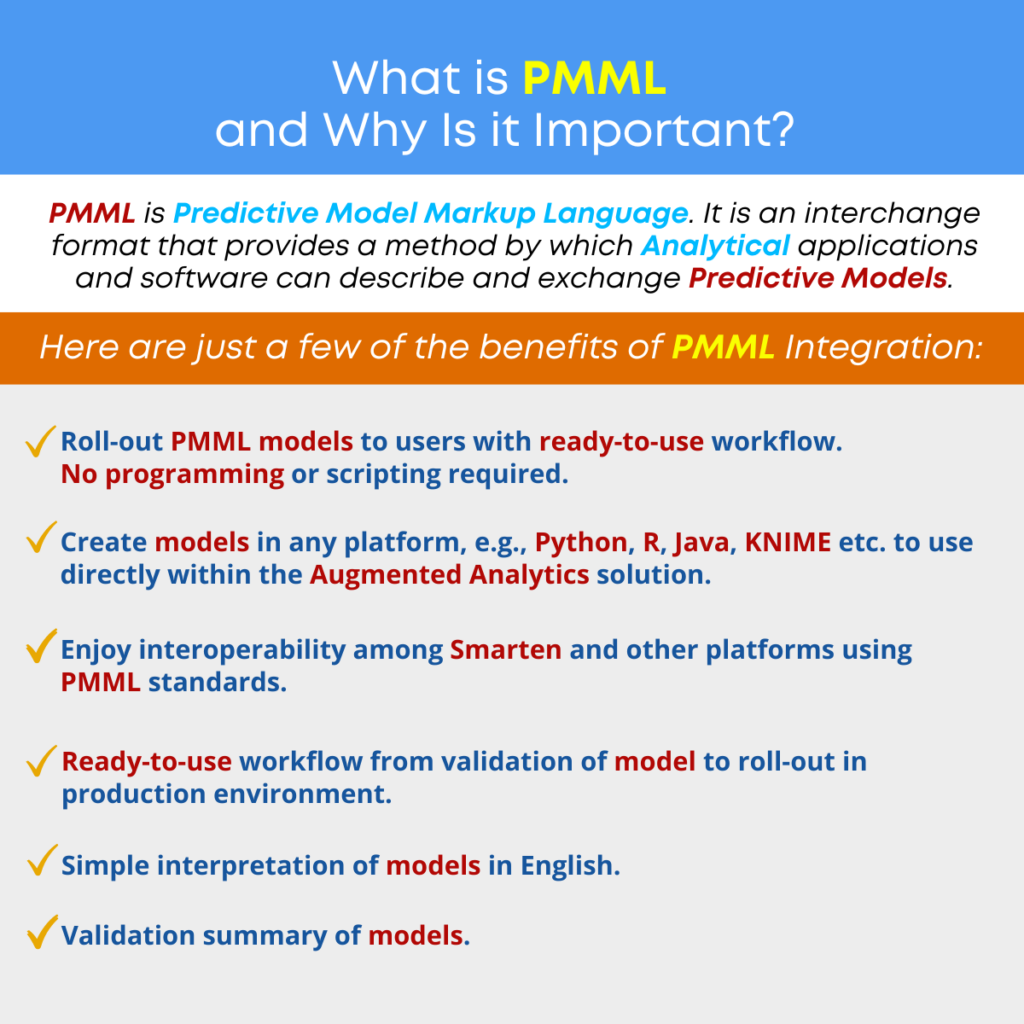
Another way to look at it, is to think of PMML Integration as a key to open a door and provide access to an otherwise restrictive, closed environment. With that key, you can import data and use an analytical solution to incorporate incoming data for analysis and decision-making.
‘With the right PMML integration tools, your business users can create models using their preferred platform, and then export the models as PMML files and import those PMML files to the augmented analytics solution to be used for analysis and reporting.’
Now you can begin to understand the potential value of PMML integration. By enabling a conversion and interchange technique, we can use data from across the enterprise, no matter the type of model or repository and bring that data together to create a more complete, insightful picture of what is happening within the organization, to identify trends, patterns, issues, challenges and opportunities.
Studies reveal that most PMML Integration tools provide support for numerous types of predictive analytical models, tools and techniques including:
- Logistical Regression
- Linear Regression
- Decision Tree
- Clustering
- Time Series
- …etc.
PMML Integration can and should support platforms like Python, R, Java, KNIME, etc. and support analytical tools without complex coding, scripting or programming.
With the right PMML integration tools, your business users can create models using their preferred platform, and then export the models as PMML files and import those PMML files to the augmented analytics solution to be used for analysis and reporting.
Here are just a few of the benefits of the PMML Integration capability:
- Roll-out PMML models to users with ready-to-use workflow. No programming or scripting required.
- Create models in any platform, e.g., Python, R, Java, KNIME etc. to use directly within the augmented analytics solution.
- Enjoy interoperability among Smarten and other platforms using PMML standards.
- Ready-to-use workflow from validation of model to roll-out in production environment.
- Simple interpretation of models in English.
- Validation summary of models.
- All internal PMML model information logically organized.
- Make predictions using single and multiple test records with user-friendly GUI.
- Support of REST-API for third-party apps for predictions.
‘PMML is Predictive Model Markup Language. It is an interchange format that provides a method by which analytical applications and software can describe and exchange predictive models.’
Take a look at this Webinar to gain a better understanding of the functionality and importance of PMML integration. If you wish to improve your results and support business users with appropriate augmented analytics, choose a solution that provides sophisticated features and functionality without the complexity of a traditional analytics software package. By providing PMML Integration and other crucial features, you offer your data scientists, business analysts AND your team members a package that supports Analytics For All Users within your organization, with a Full Suite Of Features And Functionality.



